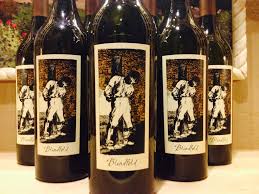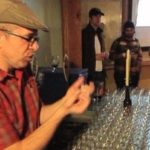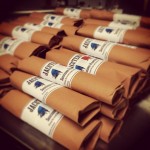Meet America’s First Red-Wine Blend: How The Prisoner Wine Started a Trend that Can’t Be Stopped

More and more wineries are moving away from “simple” wines and exploring the magic of blends. According to Nielsen’s January 2015 report, wine blends (and especially red blends) have become the fastest-growing type of wine in the country. And it all started with The Prisoner, now considered by experts as “the first true American red-blend.”
The Prisoner Wine Co. has been making headlines since it opened up its doors in 2001. “The name and artwork for The Prisoner come from an etching by the Spanish artist, Francisco de Goya, titled “El Prisionero,” according to Jennifer Beloz, winemaker for The Prisoner Wine Co. in Napa Valley, California. The name was originally meant to be used as a wine name (rather than a company name), but Beloz explains it was so well received from the beginning by both the trade and consumer, it made sense to put the name on the company. “[The prisoner] is our flagship wine and sets the precedence for style and character for all of our other wines,” she explains.
The resurgence of blends has been possible thanks to the talent of winemakers who are not afraid to push the line. Beloz explains that they create a lot of unlikely blends at the Prisoner, mixing Charbono with Cabernet Sauvignon and Petite Sirah, among many other varieties. “I work with my team, and our close-knit family of growers, to source the best fruit throughout California to produce our current set of wines,” Beloz says. “These include The Prisoner (Napa Valley Red Blend), Blindfold (California White Blend), Thorn (Napa Valley Merlot), Cuttings (California Cabernet Sauvignon) and Saldo (California Zinfandel).”
The key to fine blends is in choosing the best possible ingredients to get you started. Beloz points out that at The Prisoner, they seek out vineyards and appellations that are suited best to growing the varietals we are seeking for their blends. “Over time we have really been able to hone in on what vineyards and varietals work best in each region to get us the quality and style we want for our wines,” she says “There are a lot of very cool farmers and vineyard sites in California and we’re a little spoiled to work with them”
“As a winemaker, I think it’s great that the public has caught onto blends!” says Beloz. “These perceived esoteric blends or combination of varieties are being blended to make truly interesting and uniquely Californian wines.”
This is important for both the winemakers and the public, as it opens up the doors for something different. “I get to be creative and strive to make great and interesting wines across vintages, from the best fruit in California,” Beloz explains. “It makes my job fun.”
















